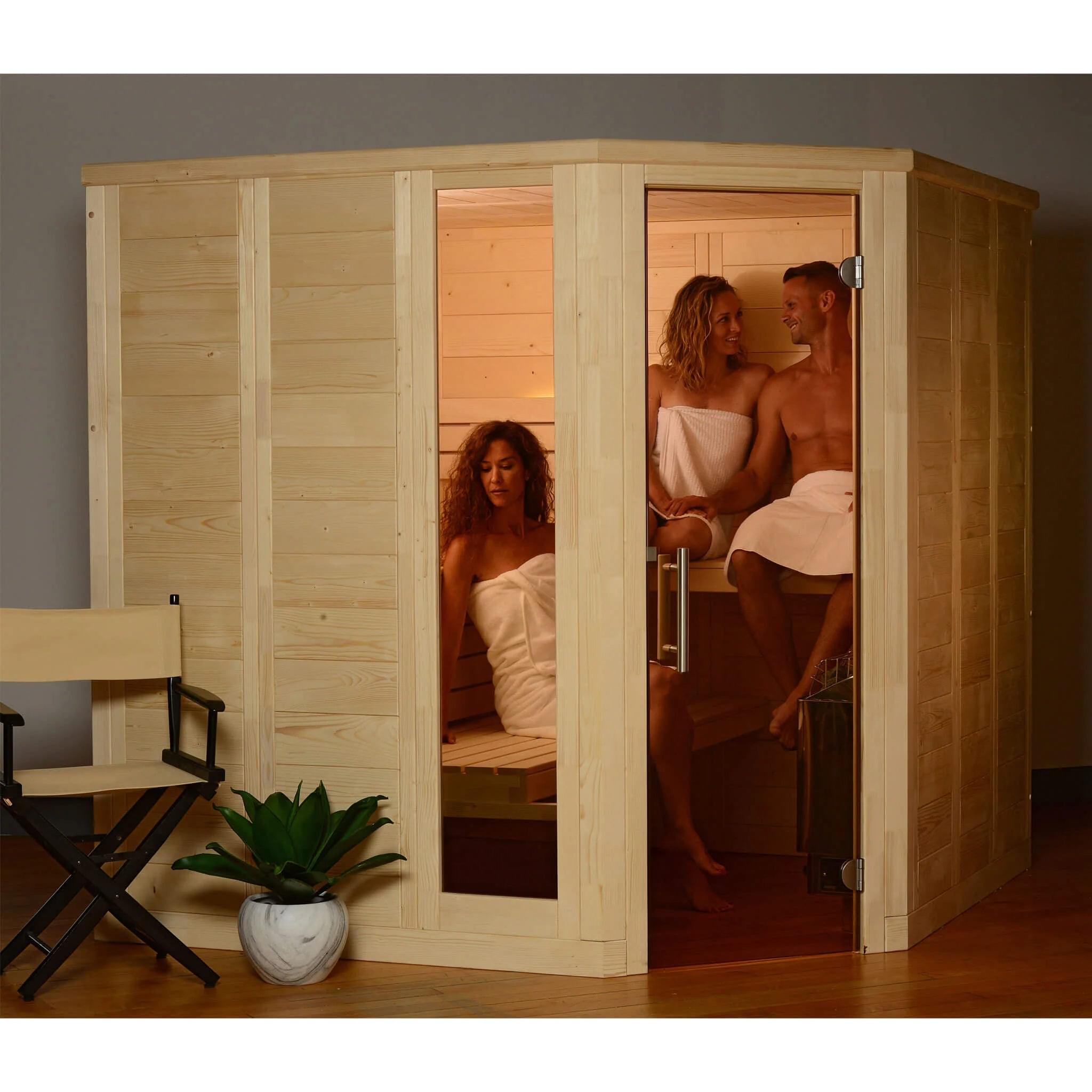Facts About Traditional Sauna Revealed
Facts About Traditional Sauna Revealed
Blog Article
Everything about Traditional Sauna
Table of ContentsTraditional Sauna - QuestionsNot known Incorrect Statements About Traditional Sauna The Of Traditional SaunaThe Basic Principles Of Traditional Sauna Get This Report about Traditional Sauna
Most of the weight lost in a sauna is water loss and is re-gained upon rehydrating. Without an uncertainty sauna can be a vital component of a healthy and balanced weight loss program. To look at the differences in between typical and IR saunas, I will certainly divide these into proven, academic, and made distinctions.Therefore, the best factor in the saunawhich is at the ceiling straight above the sauna heateris normally between 185 and 190 F. Claims that a traditional sauna goes beyond 200 F is just not true and not applicable for electric saunas offered in the United States. The temperature level for a far-infrared sauna is usually established in between 120 and 140 F; nevertheless, unlike the standard sauna, the objective in and IR area is not to attain a high temperature.

When a typical sauna has actually been appropriately heated, the sauna wall surfaces are cozy, the air temperature level has accomplished set temperature and the rocks are incredibly warmed. As an interesting side note, the heated wall surfaces and the rocks are producing far-infrared warmth, integrated with the heated air, to develop an "covering warmth".
Not known Details About Traditional Sauna
When the heat is accomplished, the components cycle on and off to preserve the high temperature. A lot of typical sauna users take pleasure in pouring water over the rocks to produce vapor to elevate sauna humidity degrees. The benefits of putting water over the rocks include: making the area more comfy, moistening the nasal flows, and enabling the use of aromatherapy by blending crucial oils with the water.

When the energy gets in the body, it creates the body temperature to enhance and ultimately results in perspiration. In an infrared sauna it is very important for the emitters/heaters to stay on practically continuously. Because there is no mass of rocks to retain warm, the sauna will cool if the emitters closed off.
Traditional Sauna Can Be Fun For Everyone
As pointed out above, the sauna bather in an infrared room wants to position himself in front of running emitters to get maximum take advantage of the warm. The heating time for both rooms can be extremely different, depending on exactly how the rooms are utilized. For a traditional sauna, a bather needs to allow 30-40 mins for the space to achieve a preferred temperature level and to appropriately pre-heat the rocks.

A well constructed sauna will generally attain a temperature of 150-160 F in about 30-40 minutes. For hotter temperature levels, the room may need to warmth for a longer duration.
To some, 15 mins was "thrown away" while the infrared energy warmed the timber panels as opposed to heating up a body, while others locate a pre-heated area to be much more comfortable and think a raised beginning temperature level is necessary to begin perspiring. The length of suggested usage for each and every room is approximately the same (10-15 minutes per session); nonetheless, due to the lower air temperature you can check here levels and the capacity to feel the effects of infrared warmth quicker than a standard sauna, it is not uncommon for an individual to spend an overall of 20-30 mins in an infrared sauna.
What Does Traditional Sauna Do?

The typical price per kWH of power in the united state is about $0.11, so a 4.5 kW heating unit will cost about $.50 to compete one hour, if the heater runs continuously for one hour. Generally a sauna heating system will certainly compete 75% of the first hour and 50% of succeeding hours on considering that the components cycle once the established temperature is accomplished.
A 2 person far-infrared space is usually literally smaller sized than a conventional sauna, frequently concerning 4' x 4' or smaller sized. The IR furnace is generally 1.5-1.7 kW using a 120 volt 15 amp plug-in solution. Because the space can be made use of earlier than a sauna space, we will certainly think the space is utilized for to of an hour consisting of warm up time.
There is a rarely reviewed difference in the social experience between the two rooms. While our society has actually shed several check my source of the social benefit of the typical sauna experience, it can be very socially gratifying (Traditional Sauna). From family time in the sauna, to heart-felt conversations with better halves, to sauna partiesthe traditional sauna experience can cause intimate interacting socially
Rumored Buzz on Traditional Sauna
A lot of greater end infrared areas include tinted light treatment, noise systems and full-glass fronts.
Report this page